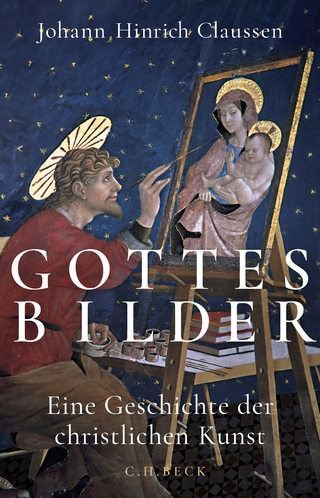
The Cross before Constantine
The Early Life of a Christian Symbol
Seiten
2015
Fortress Press,U.S. (Verlag)
978-1-4514-9030-5 (ISBN)
Fortress Press,U.S. (Verlag)
978-1-4514-9030-5 (ISBN)
Bruce W. Longenecker presents a variety of material artifacts to illustrate that Christians made use of the cross as a visual symbol of their faith long before Constantine appropriated it to consolidate his power in the fourth century. The cross served as a visual symbol of commitment to a living deity in a dangerous world.
This book brings together, for the first time, the relevant material evidence demonstrating Christian use of the cross prior to Constantine. Bruce W. Longenecker upends a longstanding consensus that the cross was not a Christian symbol until Constantine appropriated it to consolidate his power in the fourth century. Longenecker presents a wide variety of artifacts from across the Mediterranean basin that testify to the use of the cross as a visual symbol by some pre-Constantinian Christians. Those artifacts interlock with literary witnesses from the same period to provide a consistent and robust portrait of the cross as a pre-Constantinian symbol of Christian devotion. The material record of the pre-Constantinian period illustrates that Constantine did not invent the cross as a symbol of Christian faith,- for an impressive number of Christians before Constantine's reign, the cross served as a visual symbol of commitment to a living deity in a dangerous world.
This book brings together, for the first time, the relevant material evidence demonstrating Christian use of the cross prior to Constantine. Bruce W. Longenecker upends a longstanding consensus that the cross was not a Christian symbol until Constantine appropriated it to consolidate his power in the fourth century. Longenecker presents a wide variety of artifacts from across the Mediterranean basin that testify to the use of the cross as a visual symbol by some pre-Constantinian Christians. Those artifacts interlock with literary witnesses from the same period to provide a consistent and robust portrait of the cross as a pre-Constantinian symbol of Christian devotion. The material record of the pre-Constantinian period illustrates that Constantine did not invent the cross as a symbol of Christian faith,- for an impressive number of Christians before Constantine's reign, the cross served as a visual symbol of commitment to a living deity in a dangerous world.
Bruce W. Longenecker is professor of early Christianity and W. W. Melton Chair of Religion at Baylor University in Waco, Texas, having formerly taught in Britain at St. Andrews, Cambridge, and Durham Universities.
Preliminaries; 1. The Cross in Its Place; 2. The Cross and Society; 3. The Cross in a Jewish Cradle; 4. The Cross in Textual images; 5. The Cross in the Material Record; 6. The Cross in a Pompeii Bakery; 7. The Cross in the Literary Record; 8. The Cross and Its Advocates; 9. A Very Short Conclusion; Bibliography.
| Erscheint lt. Verlag | 1.8.2015 |
|---|---|
| Sprache | englisch |
| Maße | 152 x 229 mm |
| Gewicht | 318 g |
| Themenwelt | Kunst / Musik / Theater |
| Religion / Theologie ► Christentum ► Kirchengeschichte | |
| Religion / Theologie ► Christentum ► Liturgik / Homiletik | |
| Religion / Theologie ► Christentum ► Moraltheologie / Sozialethik | |
| ISBN-10 | 1-4514-9030-5 / 1451490305 |
| ISBN-13 | 978-1-4514-9030-5 / 9781451490305 |
| Zustand | Neuware |
| Haben Sie eine Frage zum Produkt? |
Mehr entdecken
aus dem Bereich
aus dem Bereich
von Athanasius bis Gregor dem Großen
Buch | Softcover (2024)
C.H.Beck (Verlag)
CHF 18,90
eine Geschichte der christlichen Kunst
Buch | Hardcover (2024)
C.H.Beck (Verlag)
CHF 44,75


